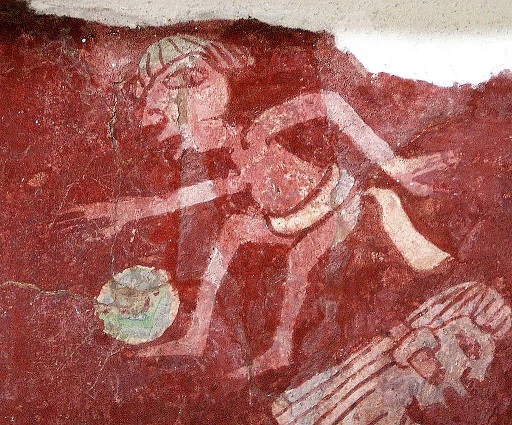The death of the great Dutch footballer Johan Cruyff gives confirmation, if any were needed, that football has for many people an almost sacred position in modern life. This reverence has a long history. Football in one form or another dates back to the earliest civilisations. Early kicking games developed in China, and among Australian aborigines. But according to football historian David Goldblatt there is no evidence that these ancient games were central to peoples’ lives. For a society that placed football, or at least variants of it, in an important social role we have to go to the ancient civilisations of South and Central America. It seems that for over 3000 years football games were important to the Aztecs and Mayans.
This continued up until the sixteenth century when Spanish invaders made their disastrous arrival. A major factor in the ancient South American game was the development of a hollow bouncing ball, made with rubber derived from trees. In most circumstances objects are inert. When a stone is thrown on the floor it stays there. A rubber ball, by contrast seems to have a life of its own in the energetic way it bounces back. Archeological fragments suggest that rubber ball manufacture began as early as 1500BC, with team ball games emerging by 1200BC. Most of these involved keeping a ball off the ground, or only allowing a set number of bounces, a kind of volley ball. Other variants had targets through which a ball had to pass. Whatever form these games took, the ball had a central place in South American life and culture. The Mayans even had a creation myth, the Popul Vuh,which described the sun and the moon as divine ball players. Perhaps you could say that Johan Cruyff was a modern expression of this ancient reverence for the ball and those who can control it.
The image at the top of this article shows an ancient South American ball game in progress – from the Tepantitla murals in Teotihuacan, Mexico. (Photo by Daniel Lobo)





